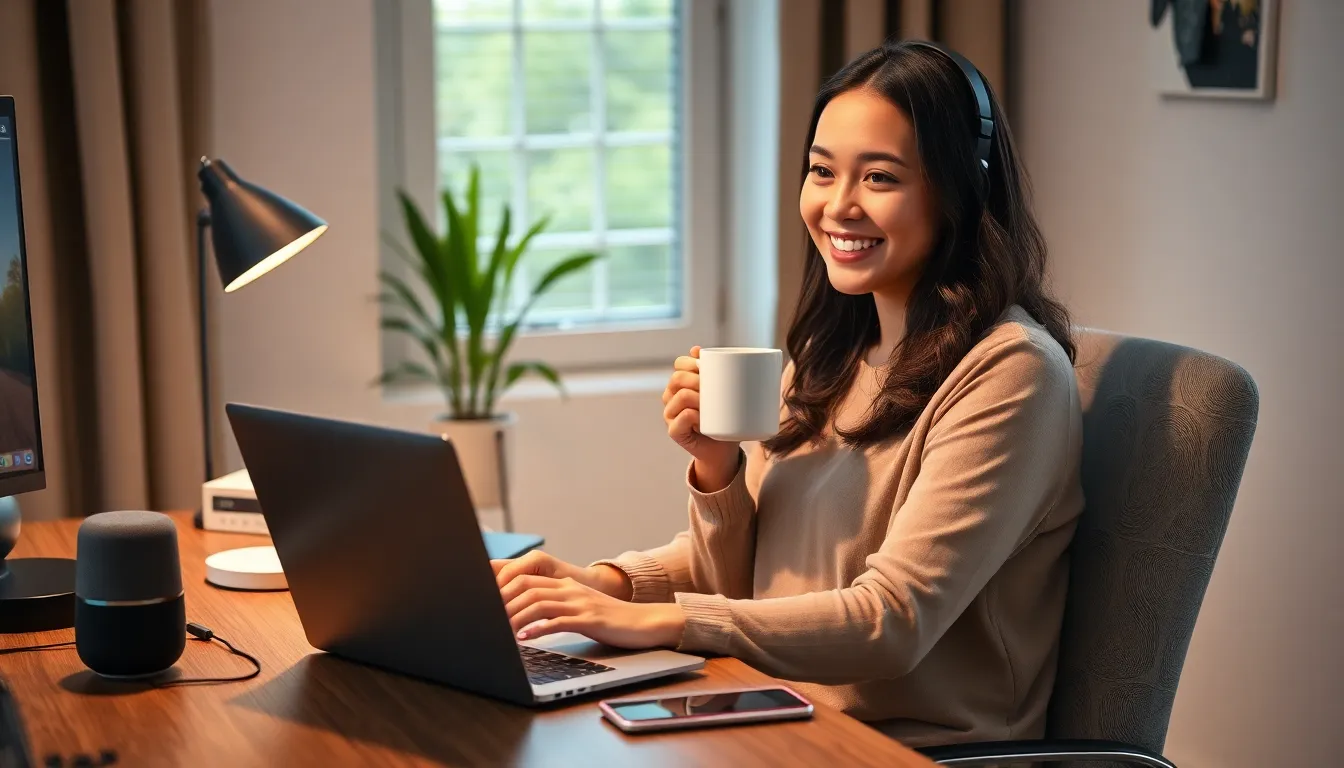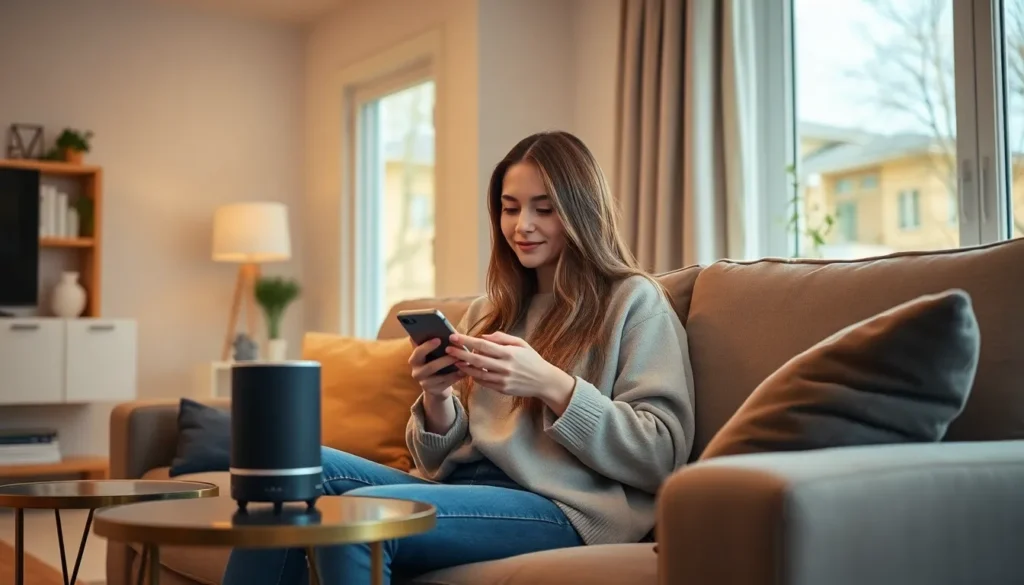In a world where juggling work, family, and personal life feels like a circus act, lifestyle automation swoops in like a superhero with a cape. Imagine a life where mundane tasks are handled by clever technology, freeing up time for the things that truly matter—like binge-watching that series everyone’s talking about or finally mastering the art of sourdough baking.
Lifestyle automation isn’t just about gadgets; it’s about creating a smarter, more efficient way to live. From scheduling your coffee to automatically watering your plants, these innovations can turn anyone into a modern-day wizard. So, why not trade in some of that chaos for a sprinkle of ease? Embrace the future and let technology do the heavy lifting while you kick back and enjoy the ride.
Table of Contents
ToggleWhat Is Lifestyle Automation?
Lifestyle automation entails using technology to streamline daily tasks, enhancing efficiency and reducing stress. Individuals benefit from automated systems that handle everything from scheduling appointments to managing smart home devices. This modern approach allows people to invest time in activities they genuinely enjoy, such as hobbies or family gatherings.
Smart devices play a significant role in lifestyle automation. Thermostats adjust temperatures based on personal preferences, while lighting systems can turn on and off according to a set schedule. Many appreciate such conveniences, as they eliminate the need for manual adjustments.
Automation software also simplifies everyday tasks. Task management apps send reminders, while grocery delivery services save precious time. By utilizing these tools, people can prioritize essential activities without getting bogged down by repetitive chores.
Embracing lifestyle automation leads to a more balanced existence. Reduced distractions enable individuals to connect with loved ones or engage in creative pursuits. Prioritization shifts from mundane responsibilities to fulfilling experiences, contributing to overall well-being.
In sum, lifestyle automation represents a significant shift in how daily life is managed. By incorporating technology into routines, individuals achieve a smoother flow in their daily activities, paving the way for a more enjoyable life.
Benefits of Lifestyle Automation

Lifestyle automation offers numerous advantages that enhance daily living. Embracing technology to manage mundane tasks leads to significant improvements in efficiency and work-life balance.
Increased Efficiency
Automation frees individuals from routine chores, allowing more time for priorities. Smart devices streamline processes by adjusting settings automatically based on user preferences. Scheduling appointments becomes hassle-free with automation software that sends reminders. Grocery delivery services ensure that essential items arrive without the need for store trips. Daily tasks become streamlined, making life less chaotic. Greater efficiency means individuals can focus on what they enjoy, such as hobbies or family time.
Improved Work-Life Balance
Lifestyle automation cultivates a healthier work-life balance for many individuals. By delegating tedious tasks to automated systems, people can allocate more time for personal interests. Engaging in leisure activities becomes easier when technology manages the logistics. Family gatherings take priority when individuals no longer waste time on tasks like cleaning or meal prep. Enjoying downtime becomes attainable as automated routines handle responsibilities. Ultimately, this balance enhances overall well-being and satisfaction in daily life.
Tools and Technologies for Lifestyle Automation
Lifestyle automation utilizes various tools and technologies to enhance daily living. Smart home devices and mobile applications significantly contribute to streamlining tasks and improving efficiency.
Smart Home Devices
Smart home devices transform daily routines by automating tasks. Smart thermostats adjust temperatures based on user preferences, which increases comfort while conserving energy. Smart lighting systems enable remote control of lighting settings via mobile devices, making it easy to create desired atmospheres. Security cameras and smart locks provide peace of mind by allowing users to monitor their homes remotely. Many appliances, like robotic vacuum cleaners, take on chores automatically, significantly reducing time spent on cleaning. These devices collectively contribute to a more convenient lifestyle, allowing individuals to focus on leisure and family rather than household maintenance.
Mobile Applications
Mobile applications play a critical role in the lifestyle automation landscape. Task management apps help users organize schedules and set reminders, facilitating smoother daily operations. Grocery delivery apps eliminate shopping trips by allowing users to order essentials from their phones. Meal planning applications suggest healthy recipes based on preferences, simplifying weeknight dinners. Fitness apps encourage users to maintain their health routines and track progress with ease. Communication applications streamline interactions and ensure timely responses. These diverse apps empower users to manage their time efficiently and focus more on enjoyable activities, greatly enhancing their work-life balance.
Implementing Lifestyle Automation in Daily Life
Lifestyle automation simplifies daily management through technology, enhancing personal efficiency. By adopting specific strategies, individuals can seamlessly integrate automation into their routines.
Setting Up Routines
Establishing structured routines leads to effective lifestyle automation. Individuals can start by identifying repetitive tasks worthy of automation. Automating morning rituals, like brewing coffee or adjusting blinds, sets a positive tone for the day. Scheduling weekly grocery deliveries frees up time for personal interests. Utilizing calendar apps creates reminders for appointments, ensuring no event gets overlooked. Prioritizing these automated routines cultivates a more cohesive daily flow. Engaging with smart speakers enables voice-activated commands, allowing for hands-free operation throughout the day.
Monitoring and Adjusting Automation
Regularly monitoring and adjusting automation ensures ongoing efficiency. Assessing routine systems allows identification of areas needing improvement. Consider changing the timer on smart lights to align with seasonal changes. Adapting grocery delivery times can match busy periods or personal schedules. Tracking device performance helps maintain optimal functionality and connectivity. Utilizing analytics from lifestyle apps reveals patterns, leading to better adjustments in daily plans. Continuous evaluation fosters a personalized automation experience, ultimately enhancing one’s lifestyle.
Challenges and Considerations
Lifestyle automation presents potential challenges that individuals must navigate. Managing device compatibility issues often proves difficult. For instance, not all smart devices seamlessly communicate with each other, which may limit automation’s effectiveness.
Another concern involves data privacy. Individuals must consider how personal data from smart devices could be accessed or shared. Choosing reliable brands with strong privacy policies can help mitigate these risks. Constantly monitoring security settings also ensures personal information remains protected.
Additionally, technology dependency can create issues. Relying heavily on automation might hinder problem-solving skills. Striking a balance between using technology for efficiency and maintaining personal engagement is essential.
Cost factors often influence decision-making. Many advanced smart devices and software solutions require substantial investments. Individuals should evaluate different solutions that fit their budgets while still offering valuable benefits.
Time investment plays a role as well. Setting up automation systems can take considerable effort upfront. Learning to manage these systems effectively requires ongoing commitment, impacting daily routines.
Lastly, automation’s effectiveness may vary based on lifestyle. Some individuals may experience greater benefits than others due to differing needs and preferences. Keeping expectations realistic ensures that automation enhances life without overwhelming it.
Addressing these challenges ensures lifestyle automation becomes a practical and beneficial tool. Careful consideration of compatibility, privacy, investment, time, and adaptability promotes a smoother integration into daily life.
Embracing lifestyle automation can transform daily routines into more enjoyable experiences. By leveraging technology to handle mundane tasks individuals can reclaim their time and focus on what truly matters. This shift not only enhances efficiency but also fosters a healthier work-life balance.
As people integrate smart devices and automation tools into their lives they pave the way for a more relaxed and fulfilling existence. While challenges may arise it’s essential to find the right balance between automation and personal engagement. With thoughtful implementation lifestyle automation can lead to a more satisfying and enriched life.





